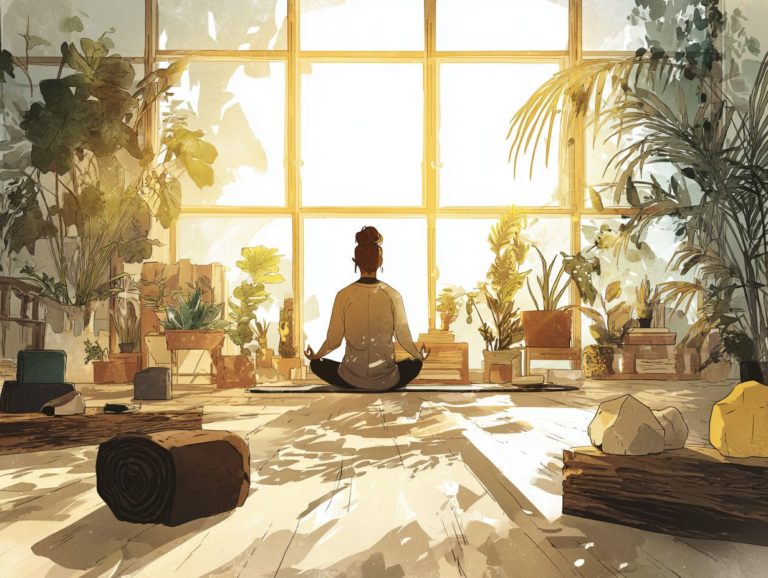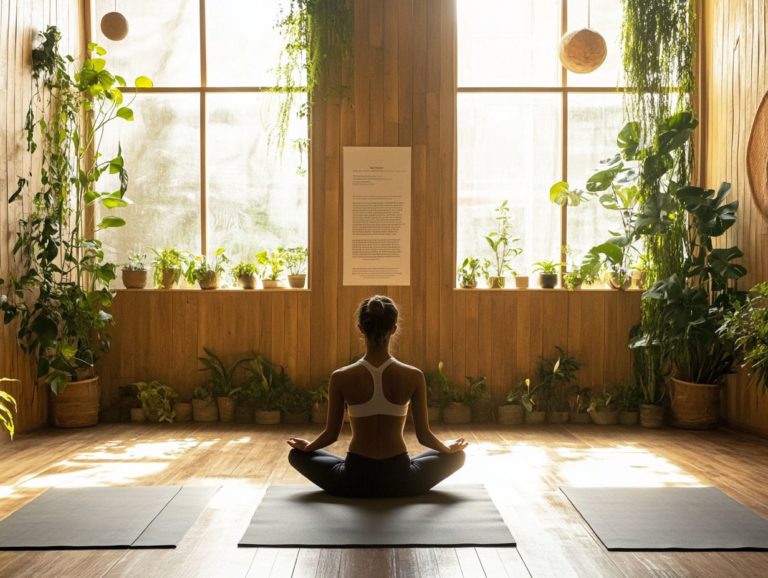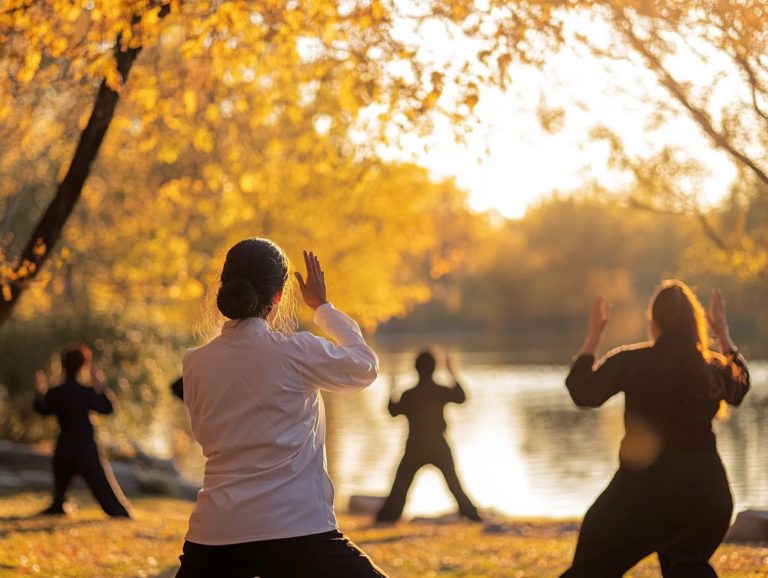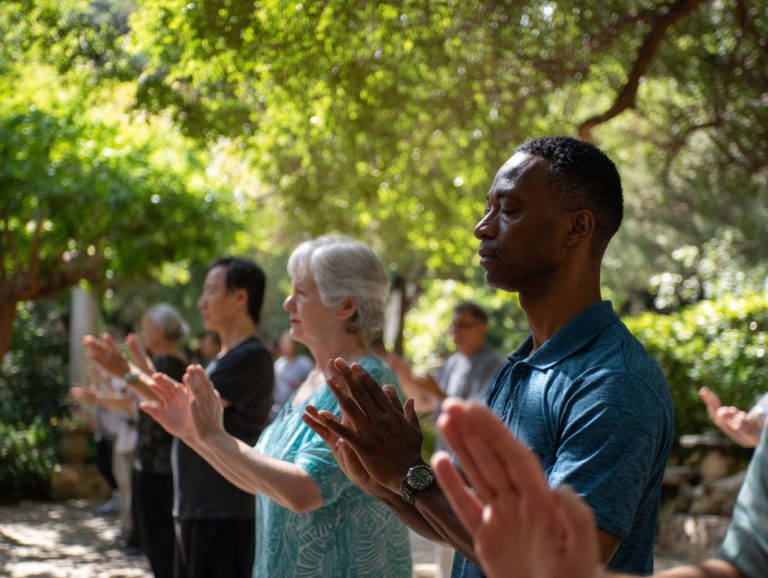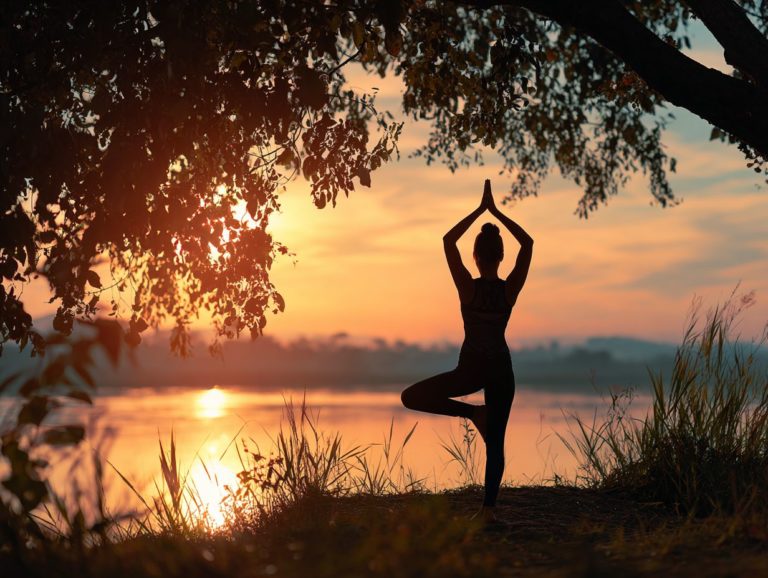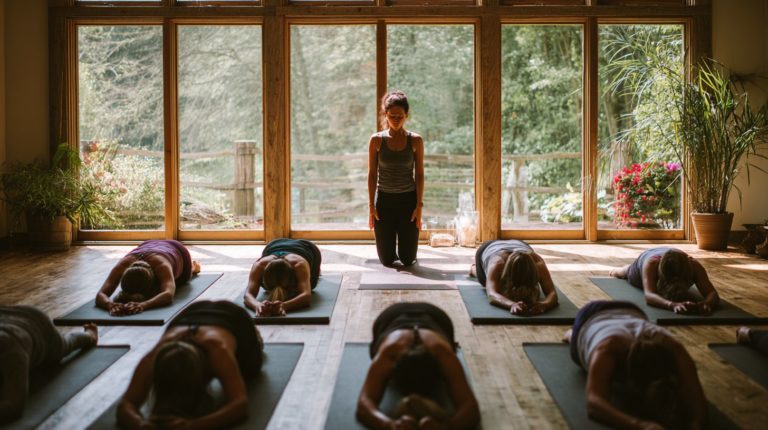How to Choose the Right Yoga Instructor: Tips for Beginners
Picking the right yoga teacher can change your yoga experience from challenging to fulfilling. Whether you’re looking for an online yoga teacher or a local professional, finding someone who matches your goals is important for building a satisfying yoga routine. In this article, we’ll share essential tips for beginners on how to identify the best instructor, ensuring you get the most out of your teaching yoga experience. Let’s embark on this journey together!
Key Takeaways:
Contents
- 1 Understanding Your Goals
- 2 Researching Potential Instructors
- 3 Yoga Instructor and Practitioner Demographics
- 4 Interviewing Instructors
- 5 Attending Trial Classes
- 6 Evaluating Compatibility
- 7 Considering Logistics
- 8 Making Your Decision
- 9 Frequently Asked Questions
- 9.1 What are some important factors to consider when choosing a yoga instructor as a beginner?
- 9.2 How can I determine if a yoga instructor is qualified and experienced?
- 9.3 Should I try different yoga instructors before deciding on one?
- 9.4 What type of yoga should I look for as a beginner?
- 9.5 How can I find a yoga instructor who is supportive and encouraging?
- 9.6 Is it important to have a personal connection with your yoga instructor?
The Importance of Choosing the Right Instructor
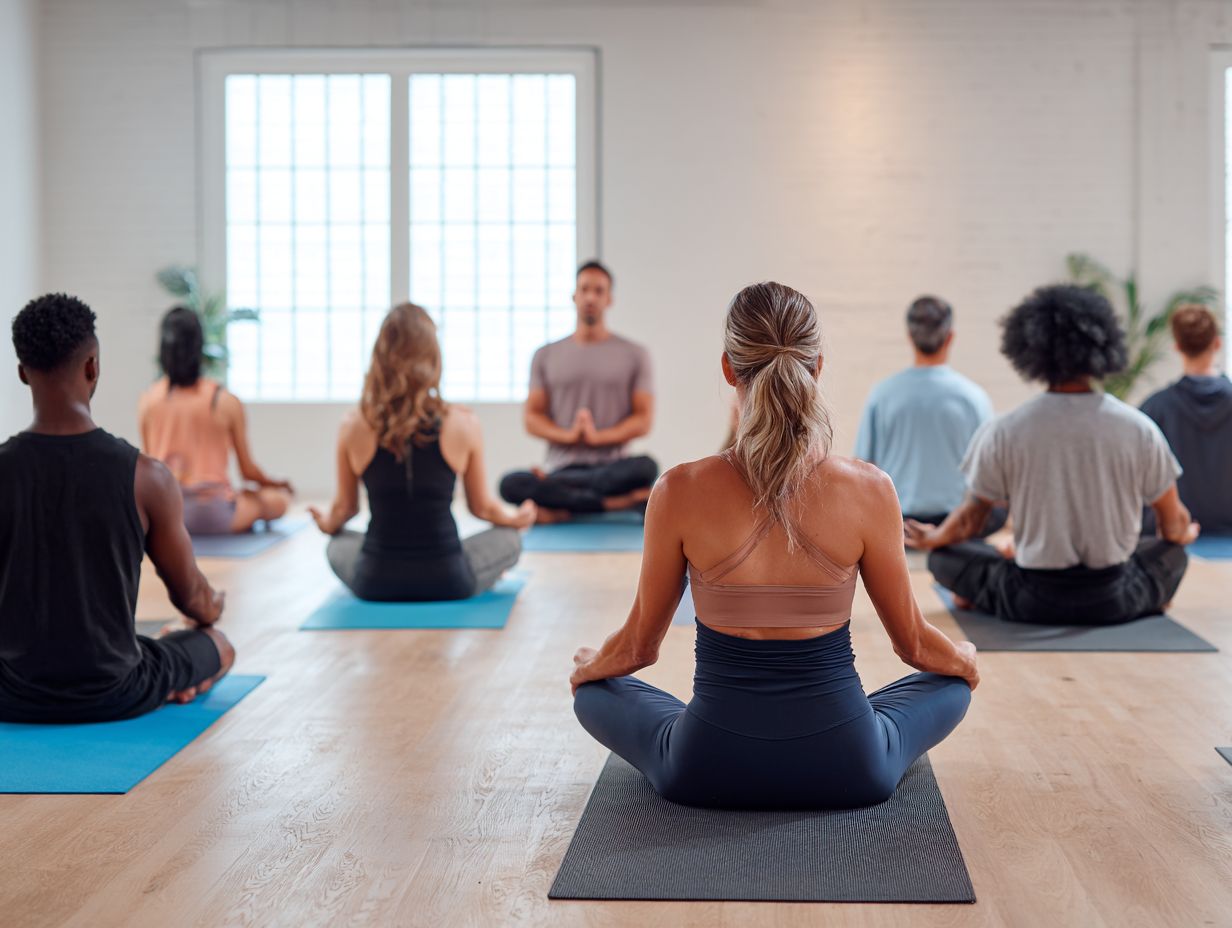
Finding a knowledgeable yoga instructor can make a significant difference in your learning curve and community engagement.
An adept instructor tailors classes to suit individual needs by assessing students’ levels and preferences. For example, they might show different ways to do poses that fit different skill levels, helping everyone feel included.
Creating a friendly yoga group can include planning gatherings or workshops that help students connect with each other. Certifications from well-known groups like Yoga Alliance can show that an instructor is committed to high standards, which can reassure students about their teacher’s qualifications.
By focusing on individual goals and building connections, teachers improve learning for all.
Overview of Yoga Styles
Familiarizing yourself with different yoga styles such as Hatha, Vinyasa, and Iyengar is essential in choosing an instructor who aligns with your preferences.
-
Hatha yoga is known as a soft approach that emphasizes simple poses and breathing techniques, perfect for those new to yoga.
-
Vinyasa emphasizes moving seamlessly between positions, promoting a continuous practice that benefits cardiovascular health. According to Byrdie, this style is particularly popular among those looking for a dynamic and flowing workout experience.
-
Iyengar yoga focuses on proper body alignment and uses props, making it ideal for people with injuries or those looking for accuracy in their practice.
-
Ashtanga provides a challenging series of poses, perfect for those who want an intense exercise session.
Review your objectives to choose a style that fits you. Worth exploring: Top 10 Holistic Health Centers in Seattle, WA for complementary wellness practices.
Understanding Your Goals
Identifying your yoga goals is the first step to choosing a teacher who can help you achieve them.
Identifying Your Yoga Objectives
To find the right instructor, start by pinpointing your specific yoga objectives, such as improving strength, flexibility, or relaxation.
Next, create a simple questionnaire to clarify your goals. Consider asking yourself:
- What physical benefits do I hope to achieve?
- Do I want clear thinking or to reduce stress?
- How much time can I commit weekly?
Once you have your answers, research potential instructors by checking their qualifications and teaching styles on platforms like Yoga Alliance or local studios. Reading reviews and attending trial classes can also help you find someone who aligns with your objectives.
Assessing Your Physical Needs
Consider your physical condition and any specific needs, such as injuries or limitations, when selecting a yoga instructor.
Begin by assessing your range of motion and flexibility at home. For example, try simple stretches and note any discomfort.
Also, consider any chronic issues like lower back pain or wrist limitations, and document how they affect your daily activities.
Once you have this information, communicate it to potential instructors during consultations. Ask about their experience with similar conditions and how they tailor sessions for individuals with specific needs.
This conversation will help you get the right changes and safe methods for your yoga practice.
Researching Potential Instructors
Looking into yoga instructors is important to make sure they have the right qualifications and teaching styles that fit what you need. Understanding the demographics of who practices yoga can also provide insight into finding an instructor who resonates with your needs.
Yoga Instructor and Practitioner Demographics
According to a recent publication by the CDC, yoga practice among adults in the United States has seen significant trends over the years, revealing detailed demographic insights into who is engaging most in this wellness activity.
Yoga Instructor and Practitioner Demographics
Yoga Demographics: Gender Demographics
Yoga Demographics: Age Group of Practitioners in the US
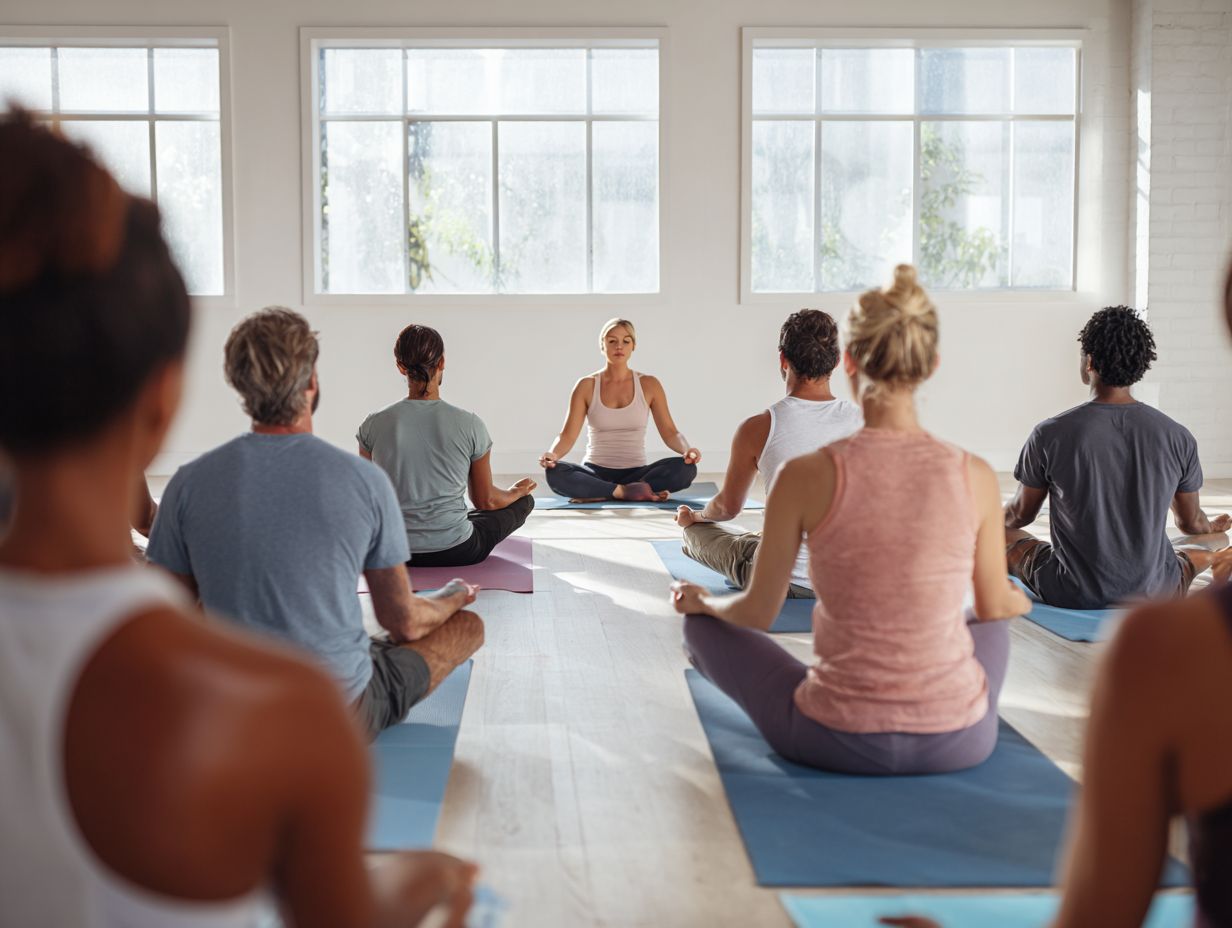
Yoga Demographics: Economic Impact
The data on Yoga Instructor and Practitioner Demographics gives important information about the makeup and financial effects of the yoga community in the United States and around the world. The statistics show details about gender, age groups, and economic factors, providing information on how the yoga industry works.
Gender Demographics reveal a significant female majority among yoga practitioners. In the U.S., 87% of practitioners are female, while globally this figure is 76%. This trend reflects yoga’s strong appeal to women, possibly due to its health benefits, community aspects, and the increasing presence of female instructors and role models in the industry. The slight decrease in the global percentage suggests a slightly more diverse gender balance outside the U.S., indicating opportunities to engage more male practitioners.
Looking at the Age Group of Practitioners in the U.S. provides further insights. Yoga attracts a broad age range, with 19% of practitioners aged 18 to 29, while the largest group, 43%, falls within the 30 to 49 age range. This middle age group likely values yoga for stress relief and physical fitness, fitting into their busy lifestyles. Additionally, 38% of practitioners are aged 50 and above, underscoring yoga’s appeal for maintaining health and flexibility in aging populations.
The data also touches on the Economic Impact of the yoga industry. In the U.S., 13% of yoga instructors earn over $80,000 annually, highlighting viable career opportunities in this growing field. The yoga industry is expected to expand by 13% by 2028, pointing to an expanding market that offers increased opportunities for both instructors and businesses involved in yoga-related products and services.
Overall, this demographic data highlights the lively and expanding nature of the yoga community. With a strong foundation among female practitioners and substantial economic prospects, the yoga industry continues to offer opportunities for expansion and engagement across diverse age groups and regions.
Checking Qualifications and Certifications
Check that your possible instructor has qualifications from reputable organizations like Yoga Alliance to guarantee good training.
Look for certifications that specify training hours. A common requirement is at least 200 hours of teacher training. This gives basic knowledge and practical experience. According to industry discussions on Reddit, affordable and quality online 200-hour yoga teacher trainings are highly recommended for foundational learning.
Some instructors may have specific certifications in areas like prenatal or vinyasa yoga, showing their additional skills. It’s beneficial to inquire about the instructor’s continuing education, as ongoing training reflects a commitment to personal growth.
Ask them about their teaching experience and methods to make sure their way of teaching matches your goals.
Reading Reviews and Testimonials
Looking at reviews and feedback from past students can give important information about how well an instructor teaches and what the class is like.
To find reliable reviews, consider checking platforms like Google, Facebook, and niche yoga forums.
Pay close attention to comments about the class atmosphere-enthusiasm, supportiveness, and inclusivity are key factors.
Look for feedback on instructor support; did students feel encouraged and guided? Consider specific instances, such as how teachers handle various abilities or make individual adjustments.
This method will let you assess both the teaching quality and the entire class experience you will get.
Exploring Class Formats and Sizes
Investigate the class formats and sizes offered by instructors, as they can heavily influence your learning experience.
Options include group classes, where you can study with others and hear different perspectives from classmates, which is great for learning together.
On the other hand, private sessions focus on your individual needs and speed.
Virtual workshops combine flexibility and accessibility, enabling you to learn from anywhere.
Consider what works best for you: if you enjoy being with others, group classes might be a good choice. On the other hand, if you like individual attention, private sessions might be better for more meaningful involvement.
Interviewing Instructors
Talking to possible instructors through interviews helps explain their teaching approaches and if they fit your yoga needs. If you’re considering taking your practice to a professional level, understanding the types and requirements for yoga certifications can be crucial in determining which instructors are most qualified to help you achieve your goals.
Preparing Questions to Ask
Making a list of thoughtful questions can help you understand an instructor’s teaching style, their background, and whether they align with your objectives.
Think about asking how they handle inclusivity, especially how they change poses for various skill levels-this shows their awareness of students’ needs.
Inquire about the breadth of yoga styles they’ve taught, such as Hatha, Vinyasa, or Yin.
You could ask, “Can you give examples of how you’ve adjusted a class for beginners?” This shows how they modify their teaching and helps you imagine what your experience in their class would be like.
Understanding Their Teaching Philosophy
Knowing an instructor’s teaching philosophy helps you see their approach and how it fits with your yoga practice.
To learn more, ask your instructor about what has influenced them and how they teach. For example, whether they teach Hatha, Vinyasa, or Kundalini, each type influences how they teach.
Inquire about their views on alignment, breathwork, and meditation. For example, a teacher who emphasizes alignment might focus on accuracy in postures, while a Vinyasa teacher might focus on smooth movements between poses.
This knowledge improves your practice and helps you select classes that fit your personal yoga experience.
Attending Trial Classes
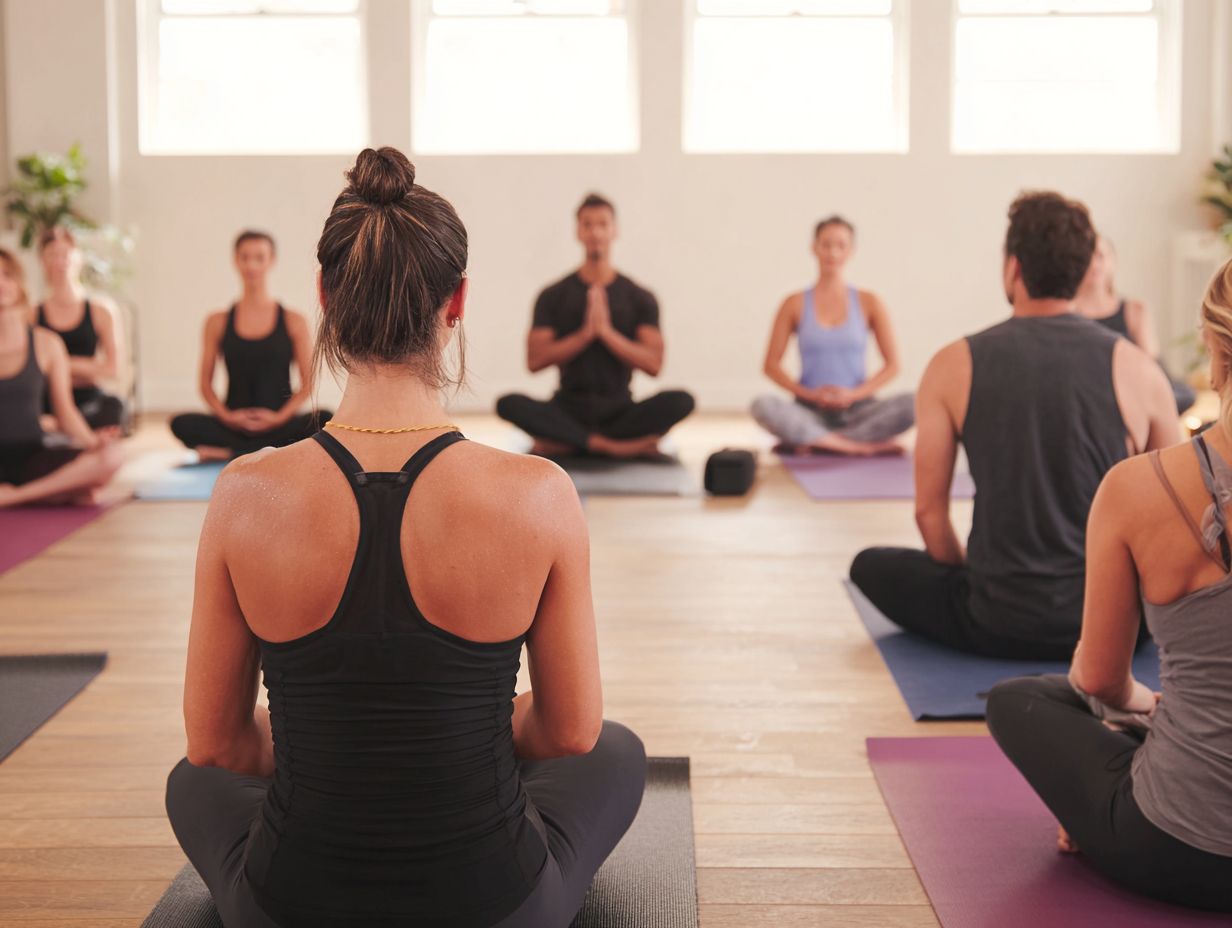
Trial classes let you see how a teacher teaches and feel the class vibe before deciding to join.
What to Observe During a Class
Notice how clear the instructor is, how smoothly the class runs, and how they change poses for different skill levels during the trial class.
Observe the instructor’s communication style. Are they encouraging and supportive? Note the pacing of the class; is it consistent, allowing time for breaks or adjustments for various skill levels?
Also, evaluate student engagement; are participants actively involved and asking questions? Consider the overall atmosphere of the class-does it feel welcoming and inclusive?
Writing down details about these points will help you decide if the class is right for you.
Assessing Instructor Interaction and Support
Seeing the instructor interact with and help everyone makes the yoga class feel customized for each person.
To improve this experience, try giving feedback on particular parts of teaching. For example, watch how teachers help students with poses and make changes specific to each person’s needs.
Ask questions during class regarding modifications for different skill levels. Suggest incorporating regular check-ins or feedback forms to gauge student progress and preferences.
Tools like Google Forms can help gather anonymous feedback, allowing teachers to change their methods and styles effectively. This ongoing conversation creates a helpful setting and improves teaching quality.
Evaluating Compatibility
Checking if you and a teacher are a good match is important for a satisfying and effective yoga practice.
Teaching Style Choices
Knowing what teaching methods work best for you can help you choose a teacher who improves your learning.
Consider the three main teaching styles: hands-on adjustments, verbal cues, and philosophy-focused approaches.
Teachers who involve students in hands-on activities encourage them to actively participate through practical demonstrations.
Verbal cues may suit those who prefer detailed explanations and discussions, allowing the instructor to guide through concepts.
Teachers who focus on philosophy stress the importance of theories, urging students to think about concepts on their own.
Think about which style you connect with the most, and find teachers who match that choice to improve your learning experience.
Finding a Connection with the Instructor
Building a good relationship with your teacher can greatly improve your motivation and involvement in yoga practice.
To build this connection, focus on selecting an instructor whose teaching style matches yours. Attend a trial class to gauge their approach-do they focus on alignment, flow, or mindfulness?
Consider reaching out to them after class with specific questions. This shows your interest and helps build a good connection. Talking to your instructor during workshops or community events strengthens this bond, creating a supportive environment that can improve your yoga experience.
Considering Logistics
Thinking about where classes are held and when they start is important for sticking to a regular yoga routine.
Location and Accessibility
Assessing the location and accessibility of the yoga studio can influence your commitment and attendance rates.
Consider the proximity to your home or workplace; studios within a 10-15 minute travel time are often best for regular attendance.
Check the studio’s parking availability or access to public transport. Some studios also offer online classes, which can be a convenient alternative if your schedule becomes tight.
For a more flexible option, platforms like YogaGlo or Alo Moves provide extensive libraries of classes that you can take anytime. Considering these factors will help you select the best place for your yoga practice.
Class Schedule and Frequency
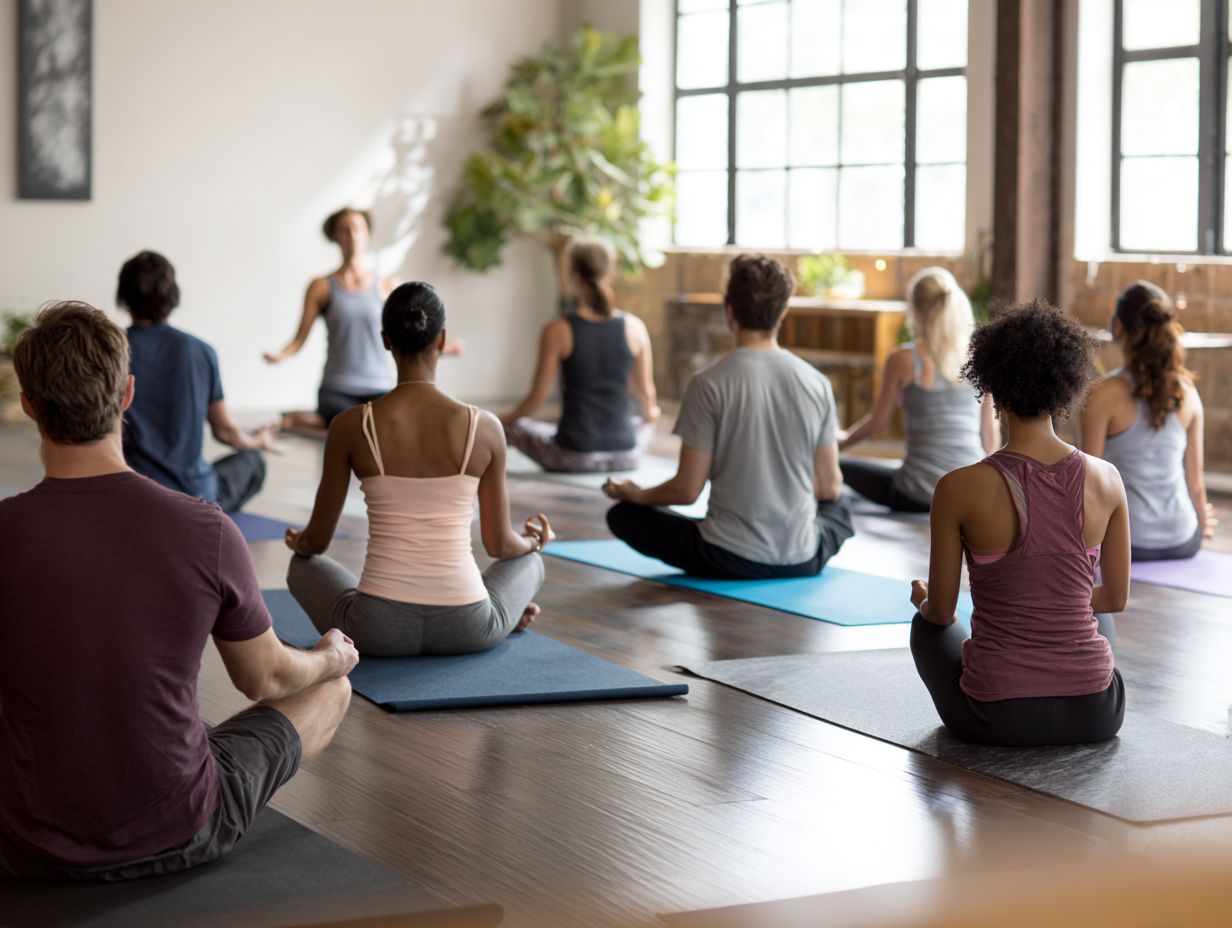
Checking the class times and how often instructors teach helps you fit yoga into your routine easily.
Aim for classes 2-3 times per week to achieve a balanced practice without overwhelming yourself. Consider instructors who offer flexible timings that match your availability.
For instance, a studio may provide early morning sessions for early risers, while others might focus on weekend classes for those with weekday commitments. This variety allows you to find a rhythm that works for you.
Online platforms like Yoga with Adriene offer easily accessible sessions anytime, catering to different schedules and preferences.
Making Your Decision
After collecting all the required details, choose your yoga teacher carefully.
Weighing All Factors
Take time to weigh all factors, including instructor rapport, teaching style, and personal goals to make an informed choice.
Start by assessing instructor rapport-students often thrive when they feel connected. Look for reviews or testimonials from previous learners to gauge this.
Next, consider teaching style: do they employ hands-on methods, lectures, or interactive discussions? Match this with your learning preferences.
Decide your own objectives-whether you want to fully grasp the topic or just complete the course.
Creating a chart to evaluate instructors on these criteria can help you pick the right one for your studies.
Trusting Your Instincts
Choosing a teacher based on your feelings can help you have a satisfying yoga experience that fits your needs.
Think about what qualities you appreciate in a teacher. For example, if staying calm helps you feel balanced, look for instructors who are calm during classes.
Look for reviews or testimonials that highlight personal connection, teaching style, or class intensity. Attending a trial class can show you how the instructor teaches and communicates with students.
Trust your feelings-if you feel uplifted and inspired, you’ve likely found a good fit. Trust your instincts when trying out various styles and personalities.
Frequently Asked Questions
What are some important factors to consider when choosing a yoga instructor as a beginner?
As a beginner, it’s important to find a teacher who knows the subject well, has plenty of experience, and is encouraging. You should also consider the type of yoga they specialize in, their teaching style, and their availability for classes.
How can I determine if a yoga instructor is qualified and experienced?
A good way to determine a yoga instructor’s qualifications and experience is to check their credentials and certifications. Look for instructors who have completed a reputable training program and have a minimum of 200 hours of teaching experience.
Should I try different yoga instructors before deciding on one?
Yes, it’s always a good idea to try out different instructors to find the one that best suits your needs and preferences. This will also help you learn more about various teaching methods and strategies.
What type of yoga should I look for as a beginner?
As a beginner, it’s recommended to start with a slower-paced class such as Hatha, Vinyasa, or Restorative yoga. These types of yoga focus on the basic poses and breathing techniques, which will help you build a strong foundation for your practice.
How can I find a yoga instructor who is supportive and encouraging?
The best way to find a supportive and encouraging yoga instructor is to read reviews and ask for recommendations from friends or family members who have taken classes with them. You can also attend a trial class or meet with the instructor beforehand to get a sense of their teaching style.
Is it important to have a personal connection with your yoga instructor?
While it’s not necessary to have a personal connection with your yoga instructor, it can make a significant difference in your overall experience. A good instructor should make you feel safe and at ease while practicing and be able to adjust to your personal needs and goals.

Sheetal Sharda has a background in CS. She got an interest in Holistic living back in 2018, and has since started exploring more into Naturapathy, Holistic Living, Yoga, and more. She got inspired to start SereneClinics to help people find reliable centers across the world.

